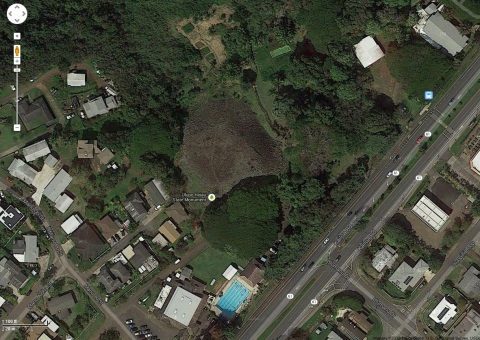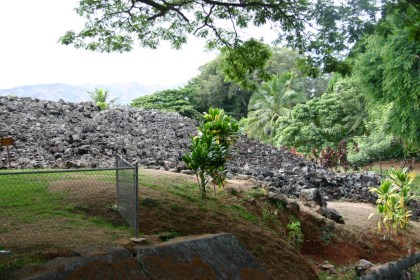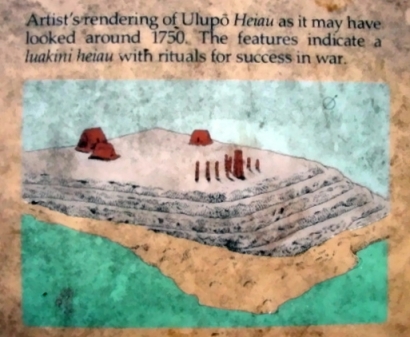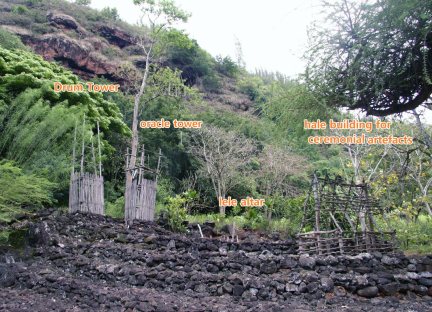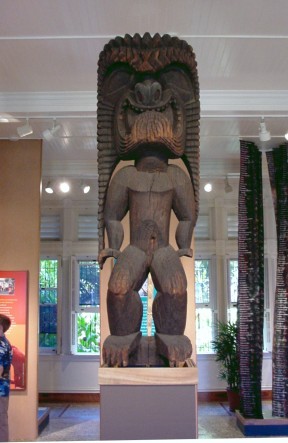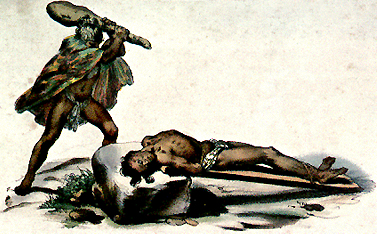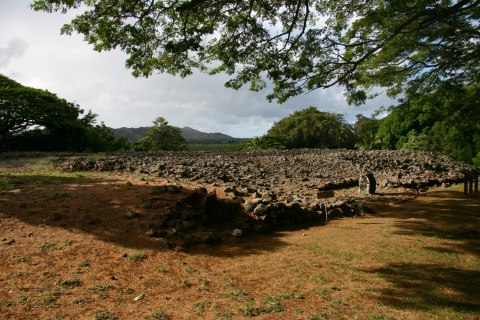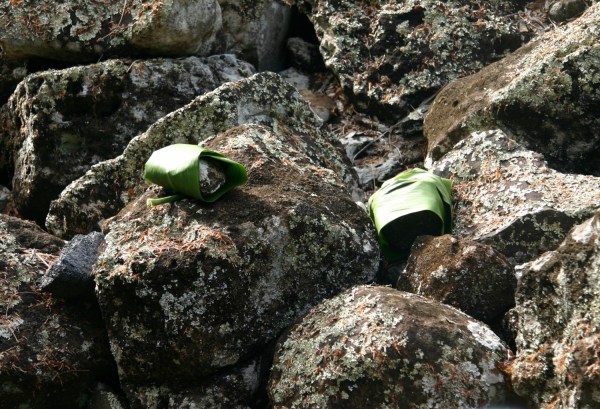On the eastern edge of the Kawai Nui Marsh in Kailua, Oahu, Hawai’i sits the Ulupō Heiau. Its name means ‘night inspiration’ and all that is left of the second largest temple in Oahu is a huge stone platform and some stone features.
Since there has been no archaeological investigation or any scientific dating, the exact age is not known. Muriel Seto, Culture Chair of Hawaii’s Thousand Friends and collector of oral histories says it goes back to around AD 900; its antiquity is also suggested by the mentioning of the menehune people (pre-Polynesian inhabitants of Hawai’i, often described as dwarfs) as responsible for the first stage of the heiau (SterlingSummer 1978, 233). A comparison with heiau on Maui, which have been radiocarbondated, however, points to a later date at around AD 1300 (Kolb 2006).
Heiau in general are structures which range from single houses surrounded by a mere wooden fence to stonewalled enclosures containing more than one building to these massive open air temples with several terraces, large platforms and carved wooden figures of Hawaiian gods. High ranking positon holders and priests constructed these temples. Some, especially the mapele (agricultural temples) heiau which were dedicated to the god Lono, held ceremonies for a general audience. Others, like the luakini (war temples) were accessible only by the aristocracy and the kahuna (priests).
The Ulupō heiau began its life with the legendary menehune and later with high chiefs of Oahu, such as Kakuhihewa in the 15th century and Kuali’i in the 17th century. Ulupō had its peak of importance around 1750 when Kailua was the political seat of power for the district of Ko’olaupoko and the favoured residence of Oahu chiefs because of the fish pond (which is now the Kawai Nui Marsh) and the superb canoe landing point at the bay. After Oahu was conquered in the 1780s the heiau was abandoned. It was turned into a territorial park in 1954, restored in the early 1960s, and listed as State Monument on the National Register of Historic Places in 1972.
It probably started its life as a mapele heiau, but Kauli’i eventually turned it into a luakini heiau with an altar, an oracle tower (anu’u), thatched hale buildings and wooden images (ki’i). A nice comparison can be seen in the restored Hale O Lono heiau at Waimea Valley (built between AD 1470-1700).
While mapele heiau required offerings of pigs, vegetables and tapa (bark cloth), The warrior god Kukailimoku demanded not only animal offerings but also human offerings.
The still very visible stone platform measures 42m x 54m and the outer walls are 9m high. In mass and volume of stones used in its construction it is even the largest heiau in Oahu. Some stones were brought over more than ten miles away, from Kualoa north of Kailua.
An important feature was the natural spring which was feeding the crops of taro, sweet potato, and sugar cane.
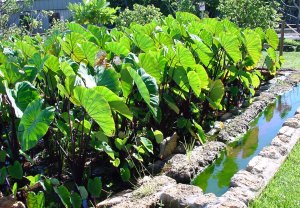
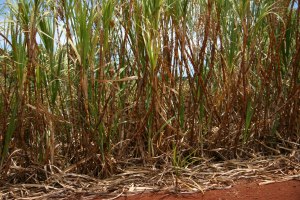
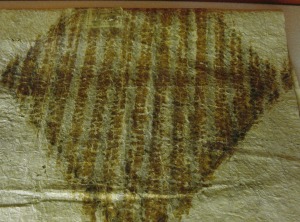 From top: Taro Field in the Bishop Museum, Oahu, Hawai’i, Sugar Cane Field, Oahu, Hawai’i , Tapa Cloth (Bishop Museum, Oahu, Hawai’i)
From top: Taro Field in the Bishop Museum, Oahu, Hawai’i, Sugar Cane Field, Oahu, Hawai’i , Tapa Cloth (Bishop Museum, Oahu, Hawai’i)
Although Hawai’in religion is not officially practised anymore, one can still observe offerings laid down by worshippers, and there are regular ceremonies held at the heiau (see this YouTube Video)
site coordinates: 21.38561,-157.752938
Bibliography:
Kirch, P 1996. Legacy of the Landscape: An Illustrated Guide to Hawai’ian Archaeological Sites, Honolulu.
Sterling, E and Summers, C 1978. Sites of O’ahu, Honolulu.
Kolb, M 2006. The origins of monumental architecture in ancient Hawai’i, Current Anthropology 46 (4), 657-64.
Links:
Ceremony at the Ulupô Heiau: http://www.youtube.com/watch?feature=player_embedded&v=–t68tsOr8U
http://www.nps.gov/history/history/online_books/kona/history1h.htm
web page of Dr. Michael Kolb, Northern Illinois University with publication list: http://www.niu.edu/anthro/faculty_staff/faculty/kolb.shtml and http://dig.anthro.niu.edu/kolb/publications.htm

